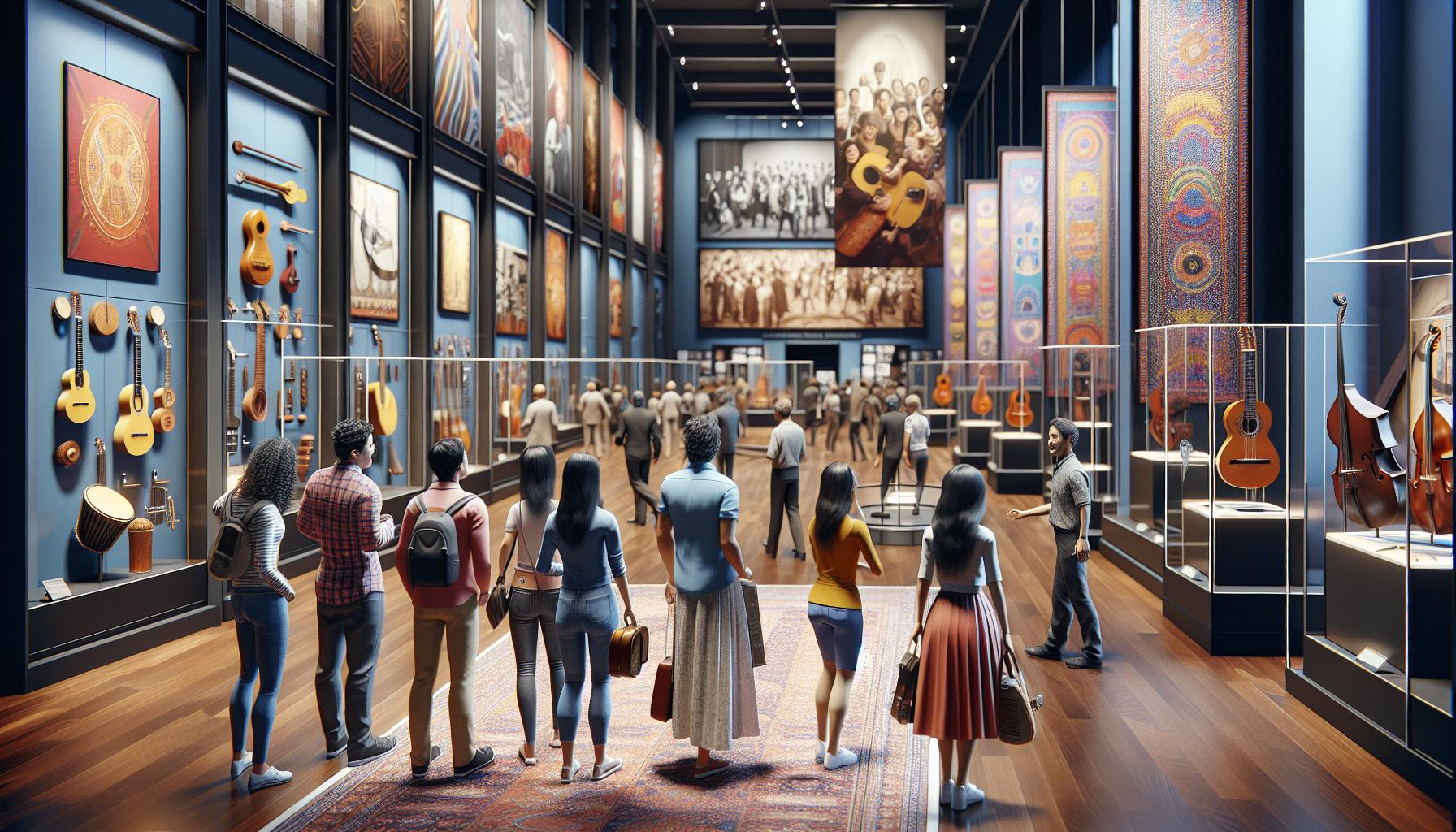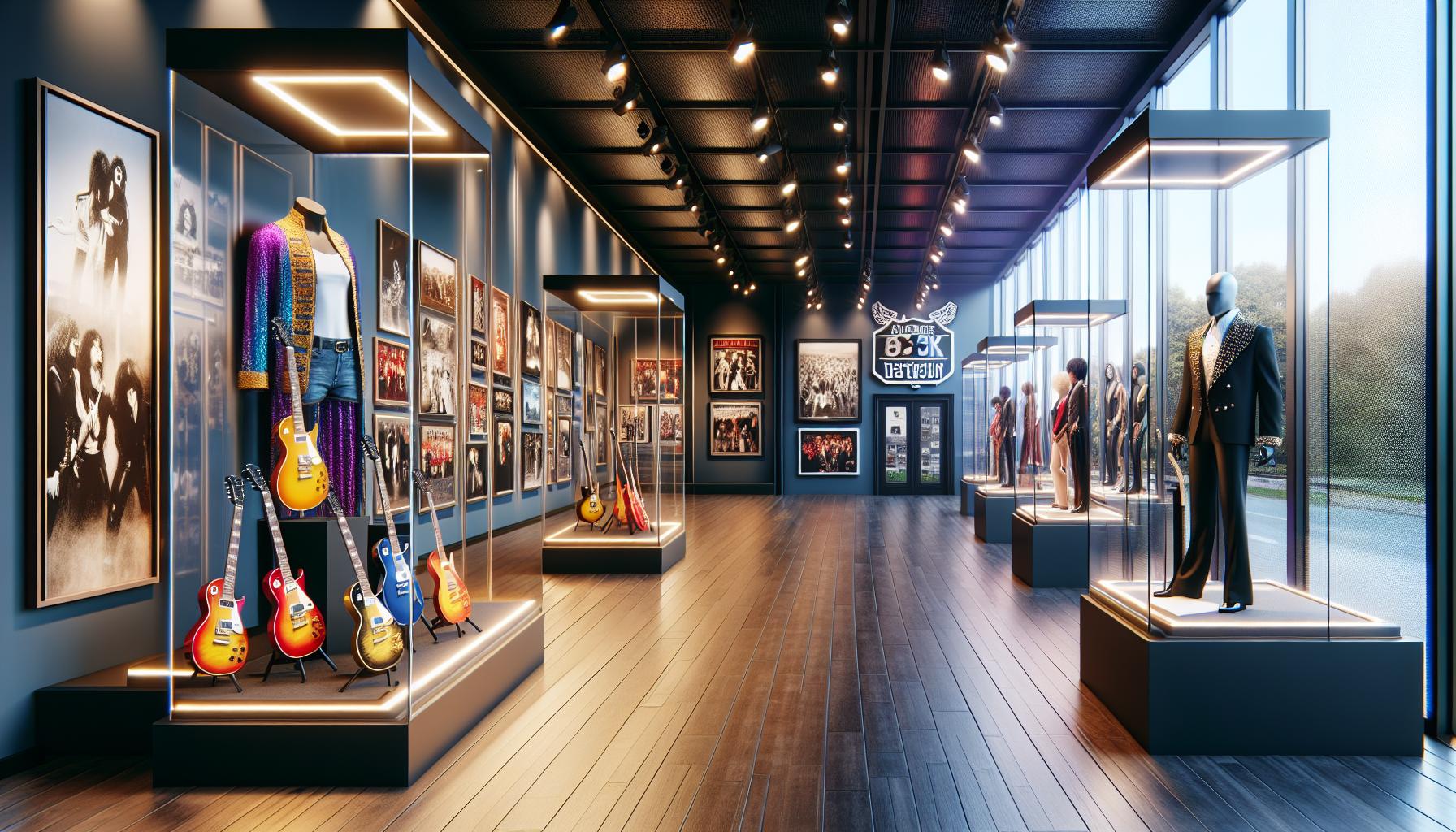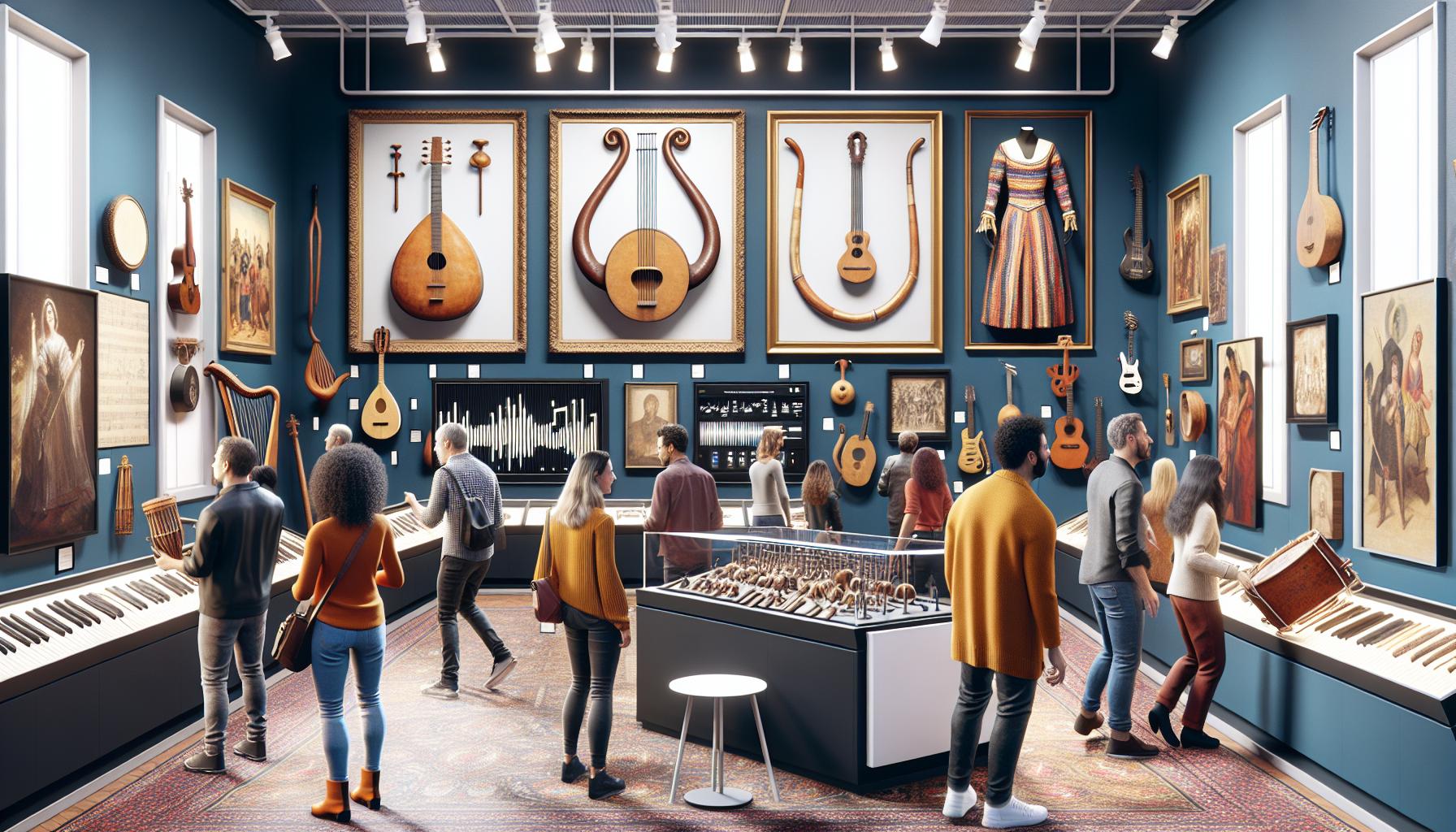Music has always been a powerful force, shaping cultures and connecting people across generations. A music history museum offers a unique glimpse into this rich tapestry, showcasing artifacts and stories that define the evolution of sound. From ancient instruments to modern technology, these museums celebrate the diverse genres and influential artists that have left their mark on the world.
Visitors to a music history museum embark on a captivating journey through time, exploring how music reflects societal changes and personal experiences. Whether it’s the blues that emerged from the Deep South or the rise of rock ‘n’ roll, each exhibit tells a story that resonates deeply. These spaces not only preserve history but also inspire future musicians and enthusiasts, ensuring that the legacy of music continues to thrive.
Key Takeaways
- Music history museums preserve and showcase the evolution of music, connecting visitors with its cultural heritage across various genres and eras.
- Engaging exhibits often include interactive elements, allowing visitors to experience music hands-on while learning about its societal impact.
- Prominent institutions, such as the Rock and Roll Hall of Fame, the Country Music Hall of Fame, and the Grammy Museum, attract millions of visitors and serve as vital resources for music education.
- Museums play a crucial role in cultural dialogue, promoting understanding and appreciation of music’s role in shaping identities and communities.
- Educational initiatives, workshops, and guided tours enhance public knowledge of music history and inspire future generations of musicians and music lovers.
Music History Museums
Music history museums serve as vital repositories of cultural heritage, showcasing the evolution of music across various eras and genres. These institutions house a diverse range of artifacts, including ancient instruments, sheet music, and multimedia displays that illustrate the progression of musical styles. By curating collections that feature significant artists and movements, these museums connect visitors with the historical context of music.
Exhibits in music history museums often include interactive elements, engaging visitors in hands-on experiences with instruments or music technology. Educational programs and guided tours provide insights into the impact of music on society. Such initiatives foster appreciation for music’s role in cultural identity and expression.
Prominent music history museums worldwide, like the Rock and Roll Hall of Fame in Cleveland and the Grammy Museum in Los Angeles, attract millions of visitors annually. These institutions not only preserve history but also inspire new generations of musicians and music lovers, reinforcing the enduring relevance of music in human experience.
Importance of Music History Museums

Music history museums play a crucial role in preserving and promoting the legacy of music. They highlight the impact of music on culture and society, showcasing its transformative power throughout time.
Cultural Significance
Cultural significance derives from the ability of music history museums to reflect societal values and changes. These institutions preserve artifacts that document various musical genres and historical periods, allowing visitors to connect with cultural heritage. Engaging exhibits showcase local music traditions, ethnic diversity, and influential figures, facilitating a deeper appreciation of music’s role in shaping identities and communities. Such museums also foster cultural dialogue, promoting understanding across different backgrounds and generations.
Educational Role
Educational roles of music history museums enhance public knowledge of music’s evolution and influence. These establishments offer curated educational programs and interactive exhibits that encourage exploration and participation. Workshops, lectures, and guided tours provide insights into music theory, historical contexts, and the artistry behind musical creations. Additionally, museums often collaborate with schools to integrate music education into curricula, inspiring students to engage with music as both an art form and a historical narrative. Such initiatives ensure that music history remains relevant and accessible to all.
Notable Music History Museums Around the World

Numerous music history museums around the globe celebrate the rich tapestry of musical evolution. These institutions play a pivotal role in preserving music’s legacy and educating the public on its impact.
The Rock and Roll Hall of Fame
The Rock and Roll Hall of Fame, located in Cleveland, Ohio, serves as a monument to rock music’s influential history. It features over 400 inductees, including iconic artists like Elvis Presley and The Beatles. The museum showcases a vast collection of artifacts, including instruments, clothing, and handwritten lyrics, enriching visitors’ understanding of rock’s cultural significance. With over 1.5 million visitors annually, it offers interactive exhibits and educational programs aimed at engaging diverse audiences.
The Country Music Hall of Fame
The Country Music Hall of Fame, situated in Nashville, Tennessee, highlights the legacy of country music. It features exhibits dedicated to legendary figures like Johnny Cash and Dolly Parton, as well as the evolution of the genre. The museum houses a vast archive of recordings, photographs, and memorabilia, preserving country music’s storied past. Additionally, it organizes events, workshops, and performances, providing an immersive experience for visitors interested in both the history and future of country music.
The Grammy Museum
The Grammy Museum, located in Los Angeles, California, celebrates the achievements of the music industry and its artists. It features exhibits on Grammy-winning musicians, highlighting their contributions to various genres. The museum offers educational programs, panel discussions, and live performances, blending history with contemporary music culture. With multimedia displays and interactive installations, it aims to engage visitors of all ages, fostering a deeper appreciation of music’s role in society and inspiring future generations of musicians.
Exhibits and Collections

Music history museums feature a variety of exhibits and collections that highlight the evolution of music across cultures and eras. These displays not only preserve the past but also engage visitors in meaningful ways.
Interactive Exhibits
Interactive exhibits encourage visitor participation, enhancing the overall experience. These displays often include touchscreens, virtual reality stations, and hands-on activities, allowing visitors to explore musical elements like rhythm, melody, and harmony. For instance, some museums feature instruments visitors can play, showcasing the sound and feel of different musical styles. Educational workshops often accompany these interactive elements, providing opportunities for deeper learning about music theory and history.
Rare Artifacts
Rare artifacts serve as the heart of music history museums, representing the rich tapestry of musical heritage. Exhibits may include ancient instruments, such as lyres and lutes, alongside iconic items like Elvis Presley’s jumpsuit or John Lennon’s handwritten lyrics. These collections illuminate the lives of influential artists and the societal context in which they created their music. Museums document each artifact’s history, connecting visitors with the stories behind them and highlighting their significance in music’s continuity.
Visitor Experience
Visitor experiences at music history museums offer a rich and immersive journey through the world of music. Exhibits invite exploration, encouraging guests to engage with artifacts and narratives that reflect music’s evolution.
Interactive elements enhance visitor participation, featuring touchscreens and virtual reality stations that allow individuals to discover rhythmic patterns, melodic structures, and historical contexts. Each exhibit showcases rare artifacts, such as ancient instruments and memorabilia from iconic musicians. These items illuminate the legacy of influential figures, providing insight into the cultural impact of their work.
Educational programs deepen understanding and appreciation of music’s role in society. Workshops, guided tours, and curated presentations foster engagement with the creative process and heritage of music. Collaborations with schools enhance outreach, inspiring students to connect with music history through hands-on activities.
Prominent music history museums cater to diverse interests. The Rock and Roll Hall of Fame features over 400 inductees, highlighting rock music’s pivotal moments. The Country Music Hall of Fame presents dedicated exhibits to legendary artists, illustrating the genre’s roots and growth. The Grammy Museum emphasizes the achievements of the music industry, blending education and entertainment in its interactive displays.
Overall, the visitor experience at music history museums combines entertainment with education, creating memorable encounters that celebrate the global significance of music across generations.
Music history museums play a crucial role in preserving the rich tapestry of musical heritage. They not only celebrate the past but also inspire future generations of musicians and enthusiasts. Through engaging exhibits and educational programs, these institutions foster a deeper understanding of music’s profound impact on society.
Visitors leave with a renewed appreciation for the diverse genres and influential artists that have shaped the musical landscape. As they explore the artifacts and stories, they connect with the cultural significance of music in their own lives. Music history museums are vital spaces that ensure the legacy of music continues to resonate for years to come.